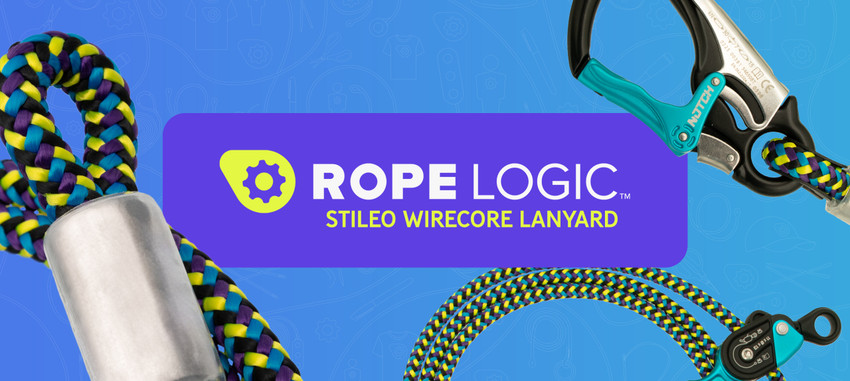TFTC #57 Introducing the Rope Logic Stileo Wirecore Lanyard
Sherrilltree Nov 6th 2025In the tree care world, the limits of equipment tend to reveal themselves quickly. When they do, those lessons often drive meaningful innovation.
The new Rope Logic Stileo Wirecore Lanyard represents one of those steps forward. By combining Courant’s advanced Stileo wirecore rope with Rope Logic’s proprietary wirecore termination, this lanyard offers a noticeable improvement in handling, reliability, and overall performance. To understand what makes the Stileo superior, it helps to look at the problem Rope Logic set out to solve.
Where the Process Began
The story goes back several years, when Tobe Sherrill heard of another field failure involving a wirecore lanyard. Though such incidents were uncommon, they raised an important question:
"Is the traditional way of constructing wirecore lanyards really the best we can do?
At the time, most wirecore lanyards were constructed using a traditional splicing method. To form the eye, the rope’s outer jacket would be stripped away to expose the steel core. The wire strands were then separated and spliced, and multiple small metal sleeves were crimped over the termination and remaining jacket to hold everything together.
The system was common, accepted, and functional, but it wasn’t perfect. Removing the jacket exposed the wire and invited moisture, grit, and corrosion. Over time, the rope jacket itself could start to slip, bunching up and interfering with smooth operation of the adjuster. And because the splice taper could be relatively long, a meaningful amount of the lanyard’s overall length was effectively lost. Additionally, the previous way in which wire cores were crimped created a point of potential failure at the base of the splice. The exposed metal at the eye also caused metal-on-metal wear, which shortened the lifespan of the components.
Rope Logic saw the opportunity for something simpler, stronger, and more dependable.
A Different Approach:
The Swaged Wire/Rope Termination
Rather than continue with tradition, Rope Logic drew inspiration from the machine termination commonly used on rope products and rethought the connection between rope sheath and wire, not by modifying the existing splice, but by replacing it entirely.
The breakthrough was the use of a hydraulic swaging process that captures both the wire core and the rope jacket together, forming a secure termination without removing the jacket.
Technically speaking, the Stileo termination is not a splice; it’s a machine termination, achieved through precision hydraulic pressure rather than traditional hand splicing. But in practical terms, what matters most is how the lanyard feels and functions.
And that brings us to the rope itself.
Built on Courant’s Stileo
Rope Logic selected Courant’s Stileo rope for this wirecore lanyard because of its exceptional handling and flexibility. Climbers will notice it right away: for a wirecore, the Stileo feels remarkably supple. It drapes and coils with ease and runs smoothly through adjusters. The 6 mm stainless steel core provides cut resistance, while the Stileo’s sheath, produced in bespoke Rope Logic colors, delivers a bright look, comfortable grip, and works equally well with mechanical adjusters and traditional friction hitches.
Is a Wirecore Lanyard Really Worth It?
Experienced climbers know that no lanyard can stand up to a direct cut from a powerful chainsaw. However, in the case of incidental or glancing contact, the integrity of the stainless-steel core can make a meaningful difference.
Handsaw testing reinforces this point: while a Silky Zubat can sever a standard lanyard in a single stroke, it could not cut through a wirecore lanyard before the teeth were destroyed. This doesn’t replace the need for careful work, but it does provide an additional margin of protection when the unexpected happens.
Manufacturing You Can Trust
The Stileo rope is produced in France by Courant, a company with generations of rope-making expertise and a reputation for dependable, work-at-height equipment. Final assembly takes place in the United States at Rope Logic’s workshop, where each lanyard is swaged, inspected, and tested before it leaves the building. Consistency and reliability are built into every unit.

